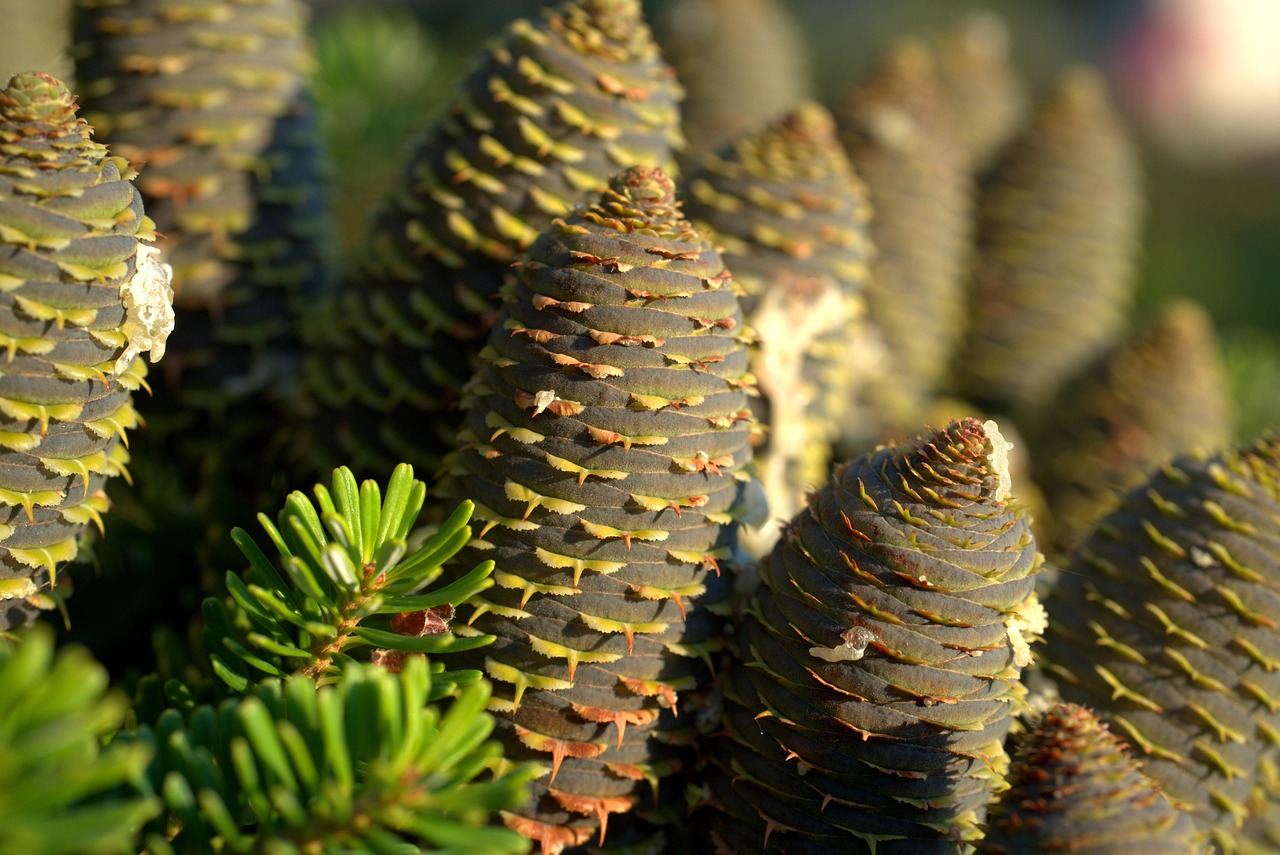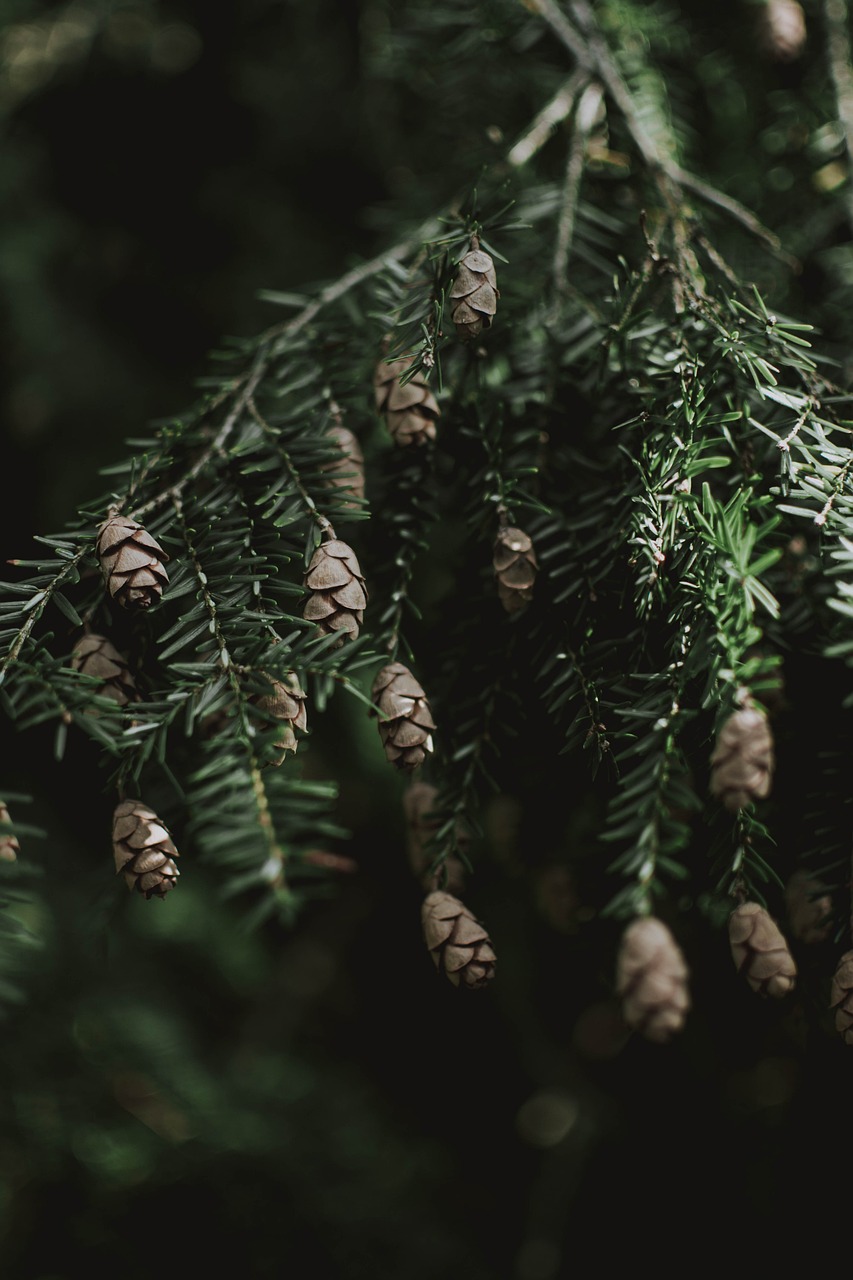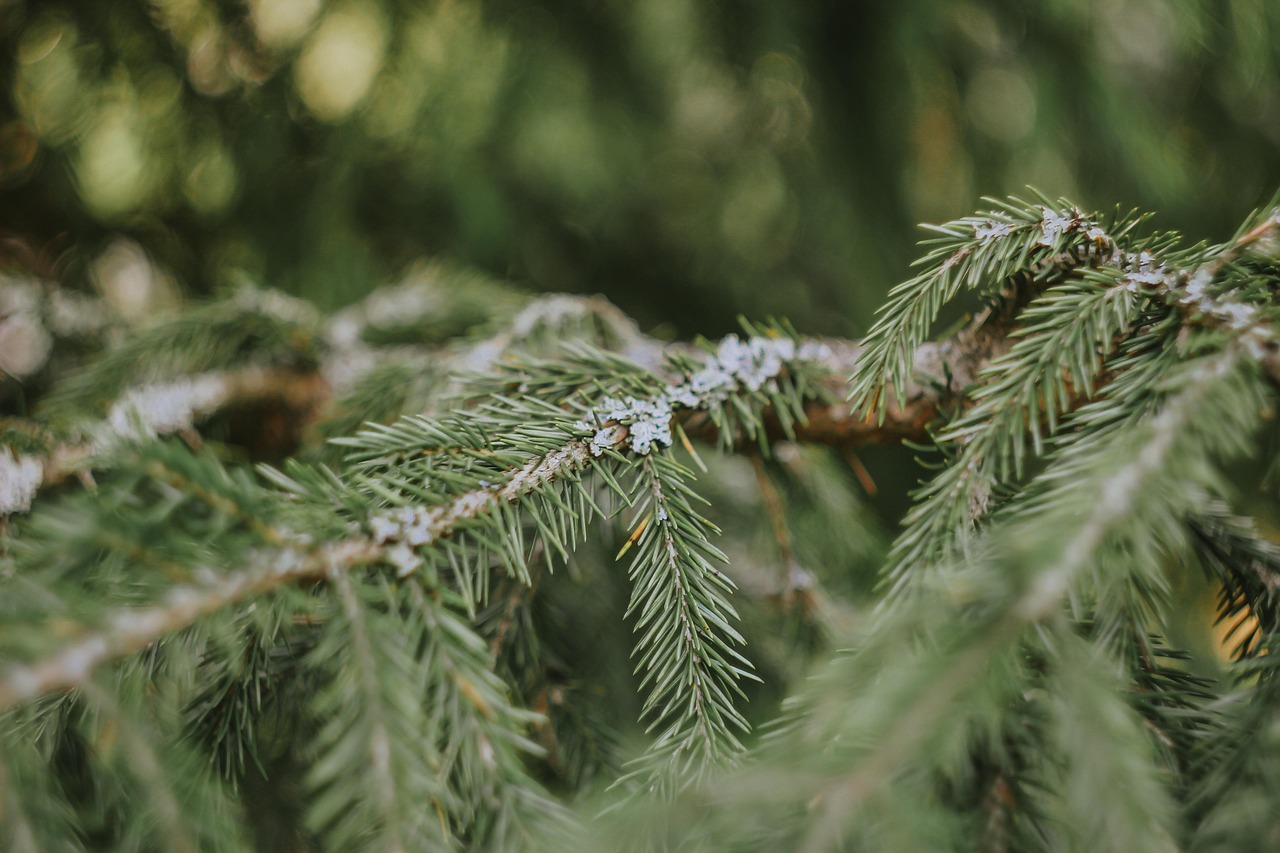Spruce trees are the ultimate choice for year-round beauty because of their stunning evergreen foliage, ability to thrive in various climates, and versatile uses in landscaping. Their striking appearance, combined with resilience and adaptability, makes them a favored option for homeowners and gardeners alike.
Exploring the Allure of Spruce Trees
Spruce trees belong to the genus Picea, which consists of about 35 species of evergreen conifers. These trees are native to the Northern Hemisphere, where they flourish in a range of environments from cold mountainous regions to temperate forests. Spruce trees are known for their distinctive needle-like leaves and conical shape, which add a touch of elegance to any landscape.

One key characteristic that sets spruce trees apart is their year-round aesthetic appeal. Unlike deciduous trees that lose their leaves in the fall, spruce trees maintain their vibrant green color throughout the seasons. This quality ensures that they remain a focal point in gardens and parks, providing visual interest even during the bleak winter months.
In addition to their beauty, spruce trees are highly resilient. They can adapt to various soil types and weather conditions, making them suitable for a wide range of climates. Whether you live in a cold northern region or a milder southern area, there is likely a spruce species that will thrive in your environment.
The versatility of spruce trees extends beyond their ornamental value. They play essential roles in ecosystems and human activities. Spruce wood is prized for its strength and lightness, making it a popular choice for construction, furniture making, and musical instruments. Additionally, these trees provide habitat and food for various wildlife species, contributing to biodiversity.
Key Characteristics of Spruce Trees
| Characteristic | Description |
|---|---|
| Evergreen Foliage | Retains green needles throughout the year. |
| Conical Shape | Classic pyramidal form that adds structure to landscapes. |
| Adaptability | Thrives in various soil types and climates. |
| Wildlife Habitat | Provides shelter and food for birds and other animals. |
The combination of these characteristics makes spruce trees an ideal choice for many landscaping projects. They can serve as windbreaks, privacy screens, or statement pieces in a garden. Furthermore, their dense foliage can help reduce noise pollution and improve air quality, adding even more value to their presence.
When selecting spruce trees for your landscape, it’s essential to consider the specific needs of your environment. Different species of spruce have varying growth rates, mature sizes, and environmental preferences. Researching these factors will help ensure that you choose the right spruce tree to enhance your outdoor space.
In summary, the allure of spruce trees lies not only in their beauty but also in their functionality and adaptability. They are a wise investment for anyone seeking to create a stunning landscape that remains vibrant throughout the year.
Benefits of Planting Spruce Trees
Beyond their aesthetic appeal, spruce trees offer numerous benefits that make them a valuable addition to any landscape. From environmental advantages to practical uses, these trees significantly contribute to both natural ecosystems and human needs.
Environmental Benefits
Spruce trees play a crucial role in the environment. Here are some of the key environmental benefits they provide:
- Air Quality Improvement: Spruce trees absorb carbon dioxide and release oxygen, improving air quality. Their foliage also filters pollutants and dust from the air.
- Soil Stabilization: The root systems of spruce trees help prevent soil erosion. This is particularly important in areas prone to heavy rainfall or on slopes.
- Habitat for Wildlife: Spruce trees provide shelter and food for various wildlife species, including birds, insects, and small mammals. This promotes biodiversity within the ecosystem.
- Climate Regulation: Forests with spruce trees can moderate local climates by creating cooler areas, reducing heat island effects in urban environments.
Aesthetic and Landscape Design Advantages
In addition to their environmental contributions, spruce trees are highly valued in landscape design for several reasons:
- Year-Round Color: The evergreen nature of spruce trees ensures that they provide vibrant green color throughout the seasons, enhancing the visual appeal of gardens and yards.
- Seasonal Interest: Some spruce species have unique features, such as cones or variations in needle color, which add interest at different times of the year.
- Versatile Use: Spruce trees can be utilized in various landscaping styles, from formal gardens to naturalistic settings. They can serve as focal points or background plants.
- Privacy Screening: Dense foliage makes spruce trees an excellent choice for creating privacy screens, shielding outdoor spaces from view while still allowing light to filter through.
Choosing the Right Spruce Species

Selecting the appropriate species of spruce is essential for ensuring that it thrives in your specific environment. Here are some popular spruce species and their characteristics:
| Species | Height | Growth Rate | Best Climate |
|---|---|---|---|
| Norway Spruce | 50-100 ft | Fast | Cool temperate regions |
| Blue Spruce | 30-60 ft | Moderate | Cold climates |
| White Spruce | 40-70 ft | Moderate | Wide range |
When selecting a spruce tree, consider factors such as available space, soil type, and climate conditions. Each species has unique characteristics that make it suitable for specific environments.
Maintenance Tips for Spruce Trees
Proper maintenance is essential to ensure the health and beauty of your spruce trees. Here are some tips for keeping your spruce trees thriving:
- Watering: Young spruce trees require regular watering, especially during dry periods. Mature trees are more drought-resistant but still benefit from consistent moisture.
- Fertilization: Apply a balanced fertilizer in early spring to encourage healthy growth. Avoid over-fertilizing, as this can harm the tree.
- Pest Management: Regularly check for pests like spider mites and bark beetles. Early detection allows for effective management and treatment.
- Pruning: Light pruning can help maintain shape and remove any dead or diseased branches. Avoid heavy pruning, as it can stress the tree.
By following these maintenance tips, you can enjoy the beauty of spruce trees
Spruce Trees in Landscaping Design


Incorporating spruce trees into landscaping design can enhance both the beauty and functionality of outdoor spaces. Their unique characteristics and versatile shapes can complement various design styles, from traditional to modern. Below, we explore how spruce trees can be utilized effectively in landscape architecture.
Creating Focal Points
Spruce trees can serve as stunning focal points in any garden or landscape. Their height, conical shape, and lush green foliage draw the eye and create visual interest. Here are some ways to utilize spruce trees as focal points:
- As a Standalone Specimen: Plant a single, mature spruce tree in a prominent location to create a striking centerpiece. This can be especially effective in larger gardens or yards.
- In Groupings: Cluster several spruce trees together to create a dramatic effect. Varying heights and species can add depth and texture to the arrangement.
- Framing Views: Use spruce trees to frame pathways, entrances, or vistas. This adds a sense of enclosure and directs attention toward specific areas of the landscape.
Enhancing Privacy and Security
Spruce trees are often used as privacy screens due to their dense foliage. They can effectively block sightlines and create secluded outdoor spaces. Consider the following strategies for using spruce trees for privacy:
- Planting Hedges: Plant a row of spruce trees closely spaced together to form a natural hedge. This provides an effective barrier against nosy neighbors or street noise.
- Creating Windbreaks: Use spruce trees to shield your home from wind and harsh weather conditions. A well-placed row can reduce wind speeds and protect other plants in your garden.
- Layering with Other Plants: Combine spruce trees with deciduous shrubs or perennials to create a multi-layered privacy screen. This approach adds variety and enhances the overall aesthetic.
Seasonal Landscape Changes with Spruce Trees
While many plants change dramatically with the seasons, spruce trees offer consistent beauty throughout the year. However, they also provide unique seasonal touches that can enhance your landscape:
Winter Wonderland
The presence of spruce trees in winter creates a picturesque scene. The snow-covered branches of these evergreens add charm and character to winter landscapes. Here are some benefits of having spruce trees during the colder months:
- Visual Interest: Spruce trees maintain their shape and color during winter, providing structure and beauty when most other plants are bare.
- Wildlife Habitat: Birds and small mammals often use spruce trees as shelter during winter, helping to sustain local wildlife populations.
Spring Awakening
As spring arrives, spruce trees continue to thrive while providing a backdrop for blooming flowers and emerging foliage. Their evergreen nature complements seasonal plantings beautifully:
- Contrasting Colors: Pairing colorful spring flowers with the deep green of spruce needles creates a vibrant contrast that enhances the entire garden.
- Ground Cover Support: The shade provided by spruce trees can create a microclimate where shade-loving perennials thrive.
Cultural Significance of Spruce Trees
Apart from their physical attributes, spruce trees hold cultural significance in various regions and communities. Their symbolism often extends beyond mere aesthetics:
- Symbol of Resilience: In many cultures, spruce trees symbolize strength and resilience due to their ability to withstand harsh weather conditions.
- Traditions and Celebrations: Spruce trees are commonly used during holiday celebrations, such as Christmas, where they are adorned with lights and ornaments, becoming the central focus of festivities.
- Cultural Heritage: In some indigenous cultures, spruce trees are revered for their medicinal properties, contributing to traditional practices and healing methods.
The multifaceted benefits of spruce trees make them an essential element in landscaping and an integral part of cultural heritage. Their adaptability, beauty, and environmental contributions ensure they remain a popular choice for both urban and rural settings.
Spruce Trees and Their Economic Value
In addition to their environmental and aesthetic advantages, spruce trees also hold significant economic value. They contribute to various industries and provide numerous products that are beneficial to society. Understanding their economic contributions can further highlight the importance of cultivating and preserving these magnificent trees.
Timber Industry
Spruce trees are highly valued in the timber industry for their quality wood. The wood from spruce is known for its strength, light weight, and versatility. Here are some key uses of spruce wood:
- Construction: Spruce wood is commonly used in building frames, flooring, and roofing materials due to its durability and ease of handling.
- Musical Instruments: The resonance of spruce wood makes it a popular choice for crafting musical instruments, such as pianos and violins.
- Furniture Making: Spruce is often used in furniture production, offering a balance of strength and aesthetic appeal.
- Pulp Production: Spruce is also processed into pulp for paper manufacturing, contributing to the publishing and packaging industries.
Tourism and Recreation
Spruce trees contribute to tourism and recreational activities, especially in regions where they thrive in natural settings. National parks and forests that feature spruce trees attract visitors who enjoy hiking, camping, and wildlife observation. This influx of tourism can significantly boost local economies.
Moreover, many communities host events centered around the beauty of spruce trees, particularly during the holiday season. Such activities can foster community spirit and encourage local businesses by drawing visitors to the area.
Advocating for Spruce Conservation
As valuable as spruce trees are, they face threats from climate change, pests, and deforestation. Advocating for the conservation of spruce trees is vital not only for preserving their beauty but also for maintaining the ecological balance. Here are some steps that individuals and communities can take:
- Promoting Sustainable Practices: Encourage sustainable forestry practices that prioritize the health of spruce forests while meeting economic needs.
- Reforestation Efforts: Participate in or support reforestation initiatives that aim to restore native spruce habitats.
- Education and Awareness: Raise awareness about the benefits of spruce trees through community programs, workshops, and educational campaigns.
- Supporting Research: Advocate for research on pests and diseases affecting spruce trees to develop effective management strategies.
Final Thoughts
Spruce trees are truly the ultimate choice for year-round beauty for a multitude of reasons. Their evergreen foliage provides visual interest throughout the seasons, while their adaptability allows them to thrive in various environments. Beyond aesthetics, spruce trees offer significant environmental benefits, including improved air quality, soil stabilization, and habitat provision for wildlife.
The economic value of spruce trees cannot be overlooked; they support industries such as timber, tourism, and recreation. Furthermore, their cultural significance enriches communities and fosters connections to nature. As stewards of the environment, it is essential to advocate for the conservation of these majestic trees to ensure they continue to thrive for future generations.
In summary, whether you are a homeowner looking to enhance your landscape or a conservationist aiming to protect natural resources, incorporating spruce trees into your plans is a rewarding choice. Their contributions extend far beyond beauty; they are integral to ecological health, economic vitality, and cultural richness.
